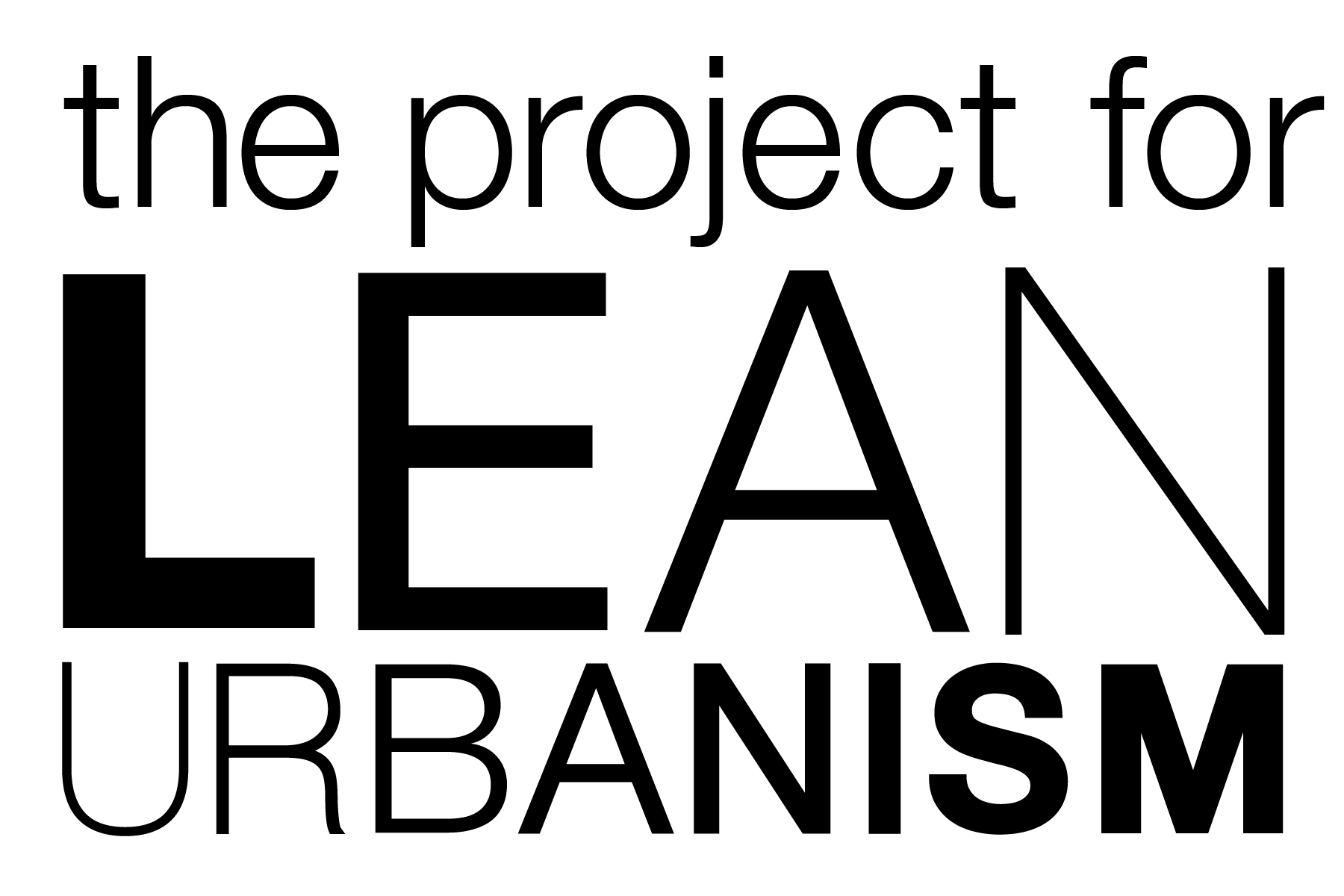Equity vs. Debt
Any development deal, Lean or otherwise, can be boiled down to two primary sources of capital: equity and debt. Equity usually comprises the first dollars in and last dollars out, meaning it holds the highest risk of any project’s financing. Because it holds more risk, return expectations are higher. But with sufficient equity in a deal, debt can be easier to secure. While the mix of equity and debt (the “capital stack”) varies from project to project, a traditional project’s capital stack might be 20 to 40 percent equity and 80 to 60 percent debt. Because equity begets debt, securing equity is the starting point for any successful development project. Andrew Frey’s paper, “Create a Financial Model,” details the information that any sources of equity will want to see.
The Challenge of Institutional Capital Sources
Speaking at the 2014 Urban Land Institute Small Scale Developers Forum, Brett Wilkerson, Managing Director at Hawkeye Partners, pointed out that 50 percent of all institutional equity (trillions of dollars) is controlled by just 25 advisors. With so much capital to place, it is understandable that doing a single deal for $100 million could be preferable to doing 100 deals of $1 million each, even though the latter may have lower volatility and greater diversified returns. In addition, institutional capital sources have very low risk profiles and very high expectations for experience and skill sets. The projects that motivate Lean developers, and the attributes that help them succeed, are not always the qualities that institutional capital sources seek.
Alternative Sources
Some Lean Development projects can access conventional capital relatively easily because the project profile, modeled returns, market momentum and experience of the team is easily underwritten. But for more innovative projects, in unproven markets, or teams with limited experience, non-institutional capital sources may be the only route to realizing a project. Some of these include:
- Friends and family: Many small projects start with a simple capitalization from family members because that is often the lowest-hanging fruit. Be aware, however, that multiple capital units of less than $50,000 can make it difficult to get to scale without spending an inordinate amount of time managing investor relations. Even friends and family expect to be kept up to date on progress, receiving high-quality accurate reports on how the money is being used and where the project budgets and schedule stand.
- High-net-worth (HNW) individuals: An example is an “accredited investor,” commonly described as having an investable net worth of at least $1 million and annual income in excess of $250,000. For HNW investors, this is generally an opportunistic business proposition, and returns need to be commensurate.
- Family offices: This is the term for operations that manage the legacy assets of wealthy families. Family offices seeking to define or enhance their missions while creating long-term returns may be better candidates for Lean, pioneering projects if both mission and goals are aligned. But they will not invest on emotion only; there has to be a credible business proposition and assessment of risk.
- Foundations: In addition to grants, many foundations make program-related investments to further their missions, looking for return of capital and return on investment, albeit at a lower rate than conventional investors. Lean developers who can demonstrate that their projects satisfy both requirements may find foundations to be good sources of patient capital.
- Grants, tax credits, etc.: The equity sources in this catch-all category require no return and less investor management once the placement is consummated, but the up-front work is extensive in time and effort. However, mastering the intricacies of effective grant writing and reporting, historic tax credits, new market tax credits, conservation easements, etc., creates intellectual property that adds value to your enterprise and can be used in subsequent projects.
How to Find Them
Non-institutional investors aren’t found with a quick Google search. It takes time, patience and extensive networking. It is not like securing a home mortgage, which is highly commoditized. Obtaining project equity is often an obtuse, opaque, non-linear and non-standardized process. But common traits among non-institutional investors do exist. For example, as long as the business fundamentals are covered, non-institutional investors might be more interested in the emotional and social dimensions of a Lean investment that creates good neighborhoods. Developing your own “private pool” of investors takes time, high levels of relationship management, and a keen sense of understanding investor needs. Building a deliberate and rigorous search methodology will help you build long-term enterprise value because you will come to understand the subtleties of how the industry works.
What Do They Want?
Non-conventional investors want to be part of something. Foundations and other impact investors want to see lives changed by their investments. For individuals, investing in small deals can be exciting. Many of them were entrepreneurs themselves, and they like seeing new ideas. Many young entrepreneurial developers have found “patrons” in older, accomplished business persons who want to see the next generation succeed.
They want something tangible. Stocks and bonds can be obtuse and incomprehensible. But real estate is tangible. They get to see drawings become reality. They can visit the site and see it being constructed. And then it produces cash. What’s not to like?
They want the bad news and the good news. You are not selling a product; you are creating a relationship. The basis of that relationship is trust, and to maintain that trust you have to be an active communicator. As one investor told me, “It’s not how you act when things are going well — it’s how you act when things go bad.” That’s when you establish your credibility and investors decide if they will reinvest with you.
And of course they want to be confident that they won’t lose money. How can you provide that confidence?
- Have an exit strategy. If the rental market goes soft, can your apartment project be converted to condos? Can your retail project accommodate other uses if that market takes a dip? What is the value of the underlying land as is, should you have a fire sale, and how much money can you give back to investors at that point? Dreaming big but anticipating the worst is how you protect your investors and yourself.
- Bring in an experienced partner. Investors want to know how you plan to manage risk, and for many, execution risk — whether you can build what you say you will, on time and in budget — is at the top of the list. Few will agree to let you learn on the job with their money. Having an experienced partner at your side will add credibility and provide you with the learning opportunity you need.
- Show that you know the market. Andrew Frey provides instructions for conducting a market study in his paper on creating a financial model. If it is a pioneering project, don’t rely on conventional market analysis. Also show that you know the competition.
Approaching Investors – Some Dos and Don’ts
Non-institutional investors have motivations and investment styles that are different from those of conventional capital sources. Keep the following in mind when approaching them.
- Know the difference between investors and lenders. They have different risk/reward profiles and require different levels of security. With the right investors behind you, it’s much easier to find your lenders. The reverse is not true.
- Understand investor motivations. Are they looking for steady return? Are they looking for a home run? Are they interested in being a part of something important? Know what motivates them before developing your pitch.
- Understand that reducing risk reduces the cost of capital. Demonstrate reduced risk based on your own skill, the partnerships you have created, or the ability to provide various exit strategies depending on market scenarios.
- Don’t emphasize the innovative aspects of your project. Lean developers are motivated by new paradigms, but to lenders and investors, innovation implies higher risk. Save that for the sales staff, not the investment community.
- Don’t confuse passion with knowledge. Passion can get people to listen, but also must have command of the facts. Show that you understand the deal — the risks, the potential rewards, how one’s money is protected, and the implications of various scenarios.
- Know when to stop pitching and start listening. Assume your potential investors make good decisions, are street smart, and have good intuition. If they ask questions, given them serious consideration. If they offer advice, take it — it’s free.
Jim Heid is a real estate developer, adviser, and author whose focus is the creation of new communities that contribute to their environment, region, and residents. In 2000, he founded UrbanGreen to act as a development partner and adviser to legacy landowners, institutions, and land development companies that embrace principles of sustainability. He is motivated by the need to deliver high-quality developments to a broader market — in an increasingly complex world of entitlements and financing — without compromising environmental, economic, or place-making objectives.

